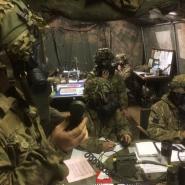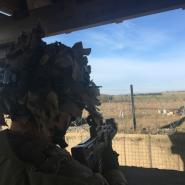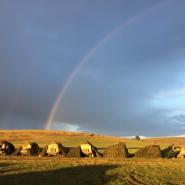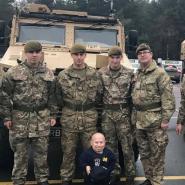by Lieutenant M R C McNeill Love
The Prince of Wales’s Company, 1st Battalion Welsh Guards
By the time of deployment in January 2017, Exercise WESSEX STORM had been central to the Battalion's thinking for over a year. Our transition from London District to 11 Brigade in early 2016 involved us converting to Light Mechanised Infantry and being assessed during WESSEX STORM less than 12 months later. Driver training started in 2015 with the bulk of the Battalion learning to use their new vehicles at the tail end of State Ceremonial and Public Duties. The impending WESSEX STORM dominated the Battalion's thinking for the whole of 2016. So when the time came to depart for Thetford there was a heightened sense of anticipation across the companies.
However, WESSEX STORM for a large part of the Battalion actually started in Castlemartin, almost straight from Christmas leave. This was the first time that most Guardsmen had the opportunity to fire top cover GPMGs live from Foxhound vehicles. This not only provided invaluable time for familiarisation, but also allowed commanders an opportunity to see the additional fire support that these vehicles can provide. The ranges consisted of mounted moving vehicle ranges and night ranges which at first proved challenging due to the previously limited experience with the Foxhounds on ranges. However by the end of the week the Battalion had ironed out any frictions and was ready to embrace the next live firing phases.
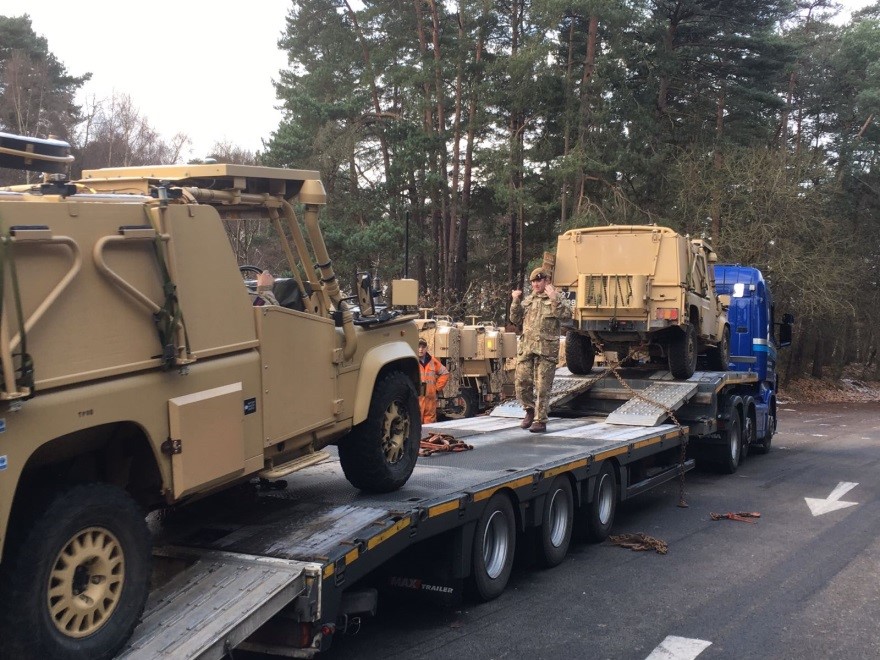 Vehicles are low loaded in Elizabeth Barracks, ready for transport to Castlemartin Ranges, the first stage of Ex WESSEX STORM 17/1.
Vehicles are low loaded in Elizabeth Barracks, ready for transport to Castlemartin Ranges, the first stage of Ex WESSEX STORM 17/1.
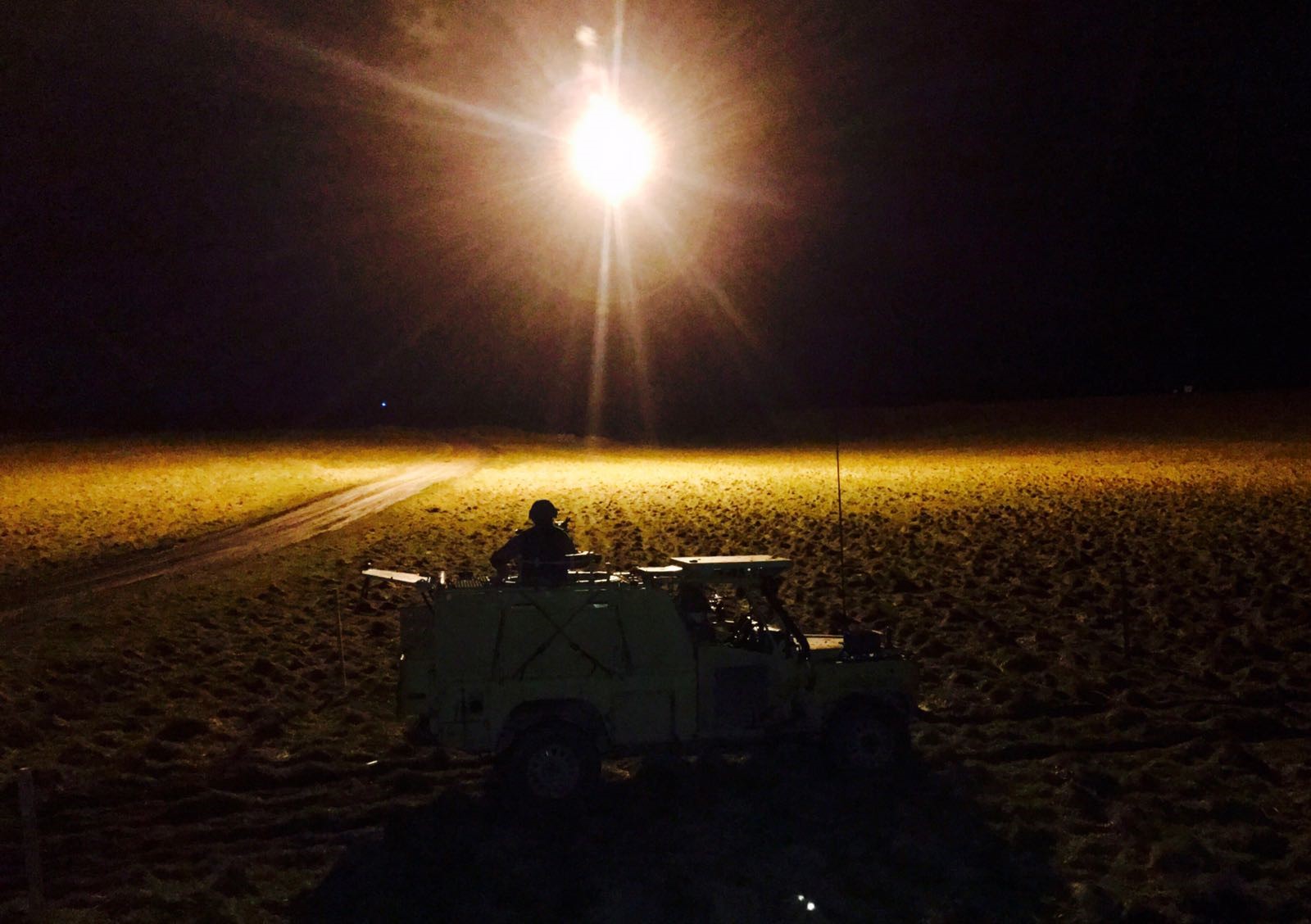 Night vehicle firing on Castlemartin Ranges.
Night vehicle firing on Castlemartin Ranges.
After a final weekend to re-cock and last minute preparations the Battalion deployed en masse from Elizabeth Barracks, Pirbright, to Wretham Camp, Thetford. This was quite a feat as it involved a move of approximately 500 personnel as well as a battlegroup’s worth of Foxhounds, RWMIK+s, Huskys, Land Rovers and the remainder of A1 Echelon’ support vehicles; a total of 127. The Battlegroup was bolstered in Thetford by members of the Queen’s Company, 1st Battalion Grenadier Guards, who backfilled the rifle companies and Gunners from 3rd Regiment Royal Horse Artillery who were to live fire 105mm light guns in support.
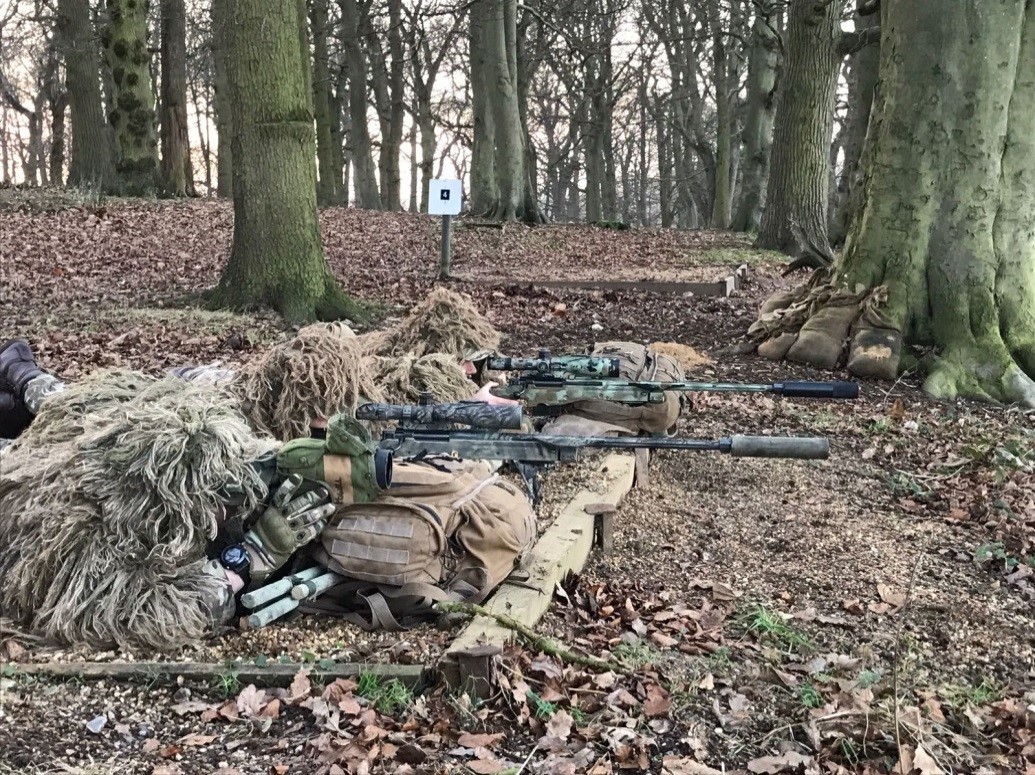 The Sniper Platoon on the ranges, Thetford.
The Sniper Platoon on the ranges, Thetford.
As with any other major exercise the entire Battlegroup had to zero their individual weapons and complete various ranges depending on their job role. The weather was very clear and dry which was ideal for the day ranges however almost on queue at 1800 every night, just as the night ranges would open, a thick ‘clag’ would appear which at times forced the ranges to be closed for safety reasons. However, after a lot of patience, perseverance and bit of good luck we were able to complete the ranges necessary in order to progress on to the Combined Arms Live Firing Exercise (CALFEX).
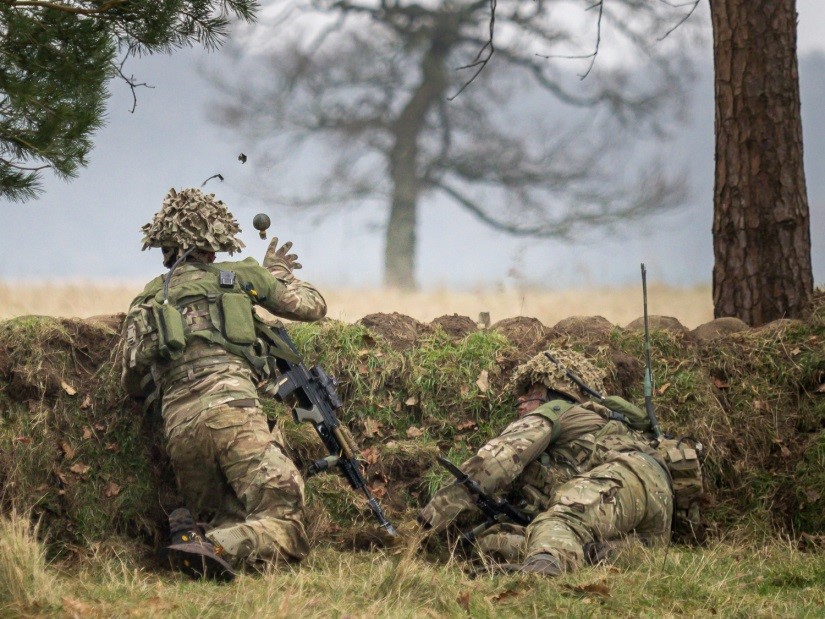
Live grenade throwing during the Combined Arms Live Firing Exercise, Thetford.
The companies rotated through a 48 hour round robin of the CALFEX and a defensive serial. The defensive serial consisted of the companies moving into a trench system where they were attacked and probed as well as being tasked with maintaining offensive spirit. Number Two Company were first to take on the trenches whilst The Prince of Wales’s Company were first to conduct the CALFEX, which consisted of a 10km advance to contact culminating in a deliberate attack upon a built up defensive position with a trench system. Clearing through the trench system with live sniper and heavy weapon support was a particular highlight for the Guardsmen especially as they could see the effect the snipers were having on the watermelon targets directly to their front. A Prince of Wales’s Company Guardsman was heard describing the range afterwards saying; ‘it was incredible, one second the melon was there and the next, there was just a sweet pink mist and that was my signal to break into the trenches!’
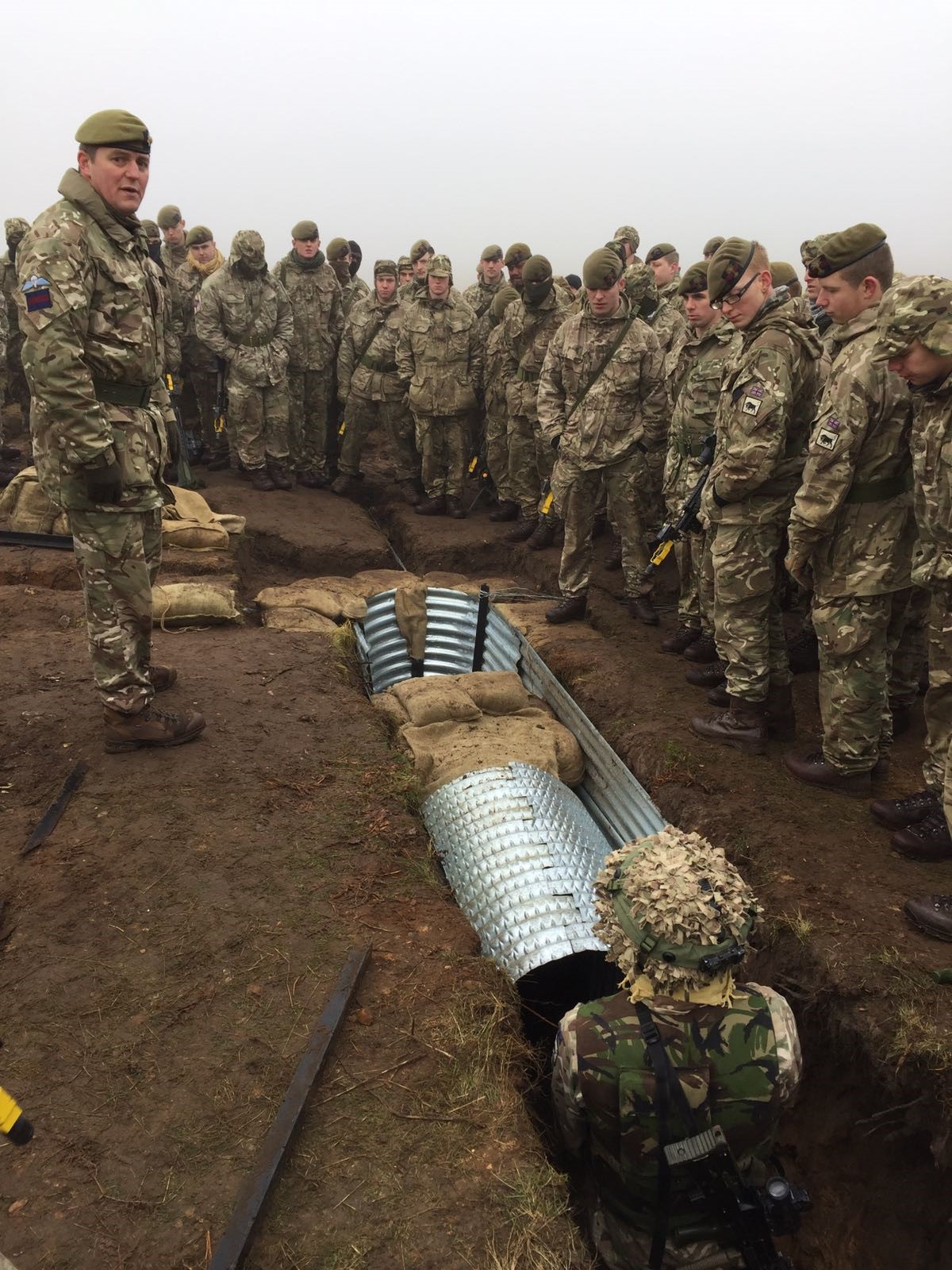
The Motorized Transport Officer runs a defensive instructional period in Thetford.
Both the CALFEX and the defensive serial were invaluable to the rifle companies in terms of allowing them to shake out, put lessons learnt during earlier training to the test and highlight any areas that needed addressing before moving onto the final exercise phase on Salisbury Plain.
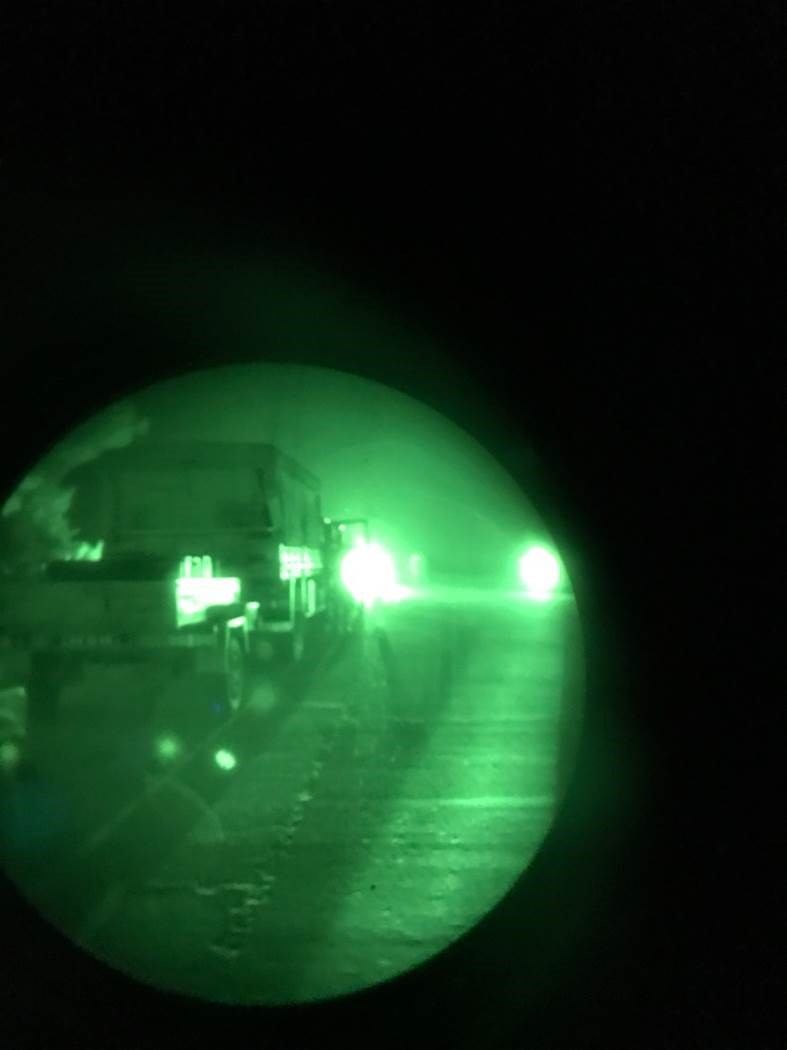
Night driver training in Thetford, seen through LUCIE goggles.
The Battalion was further enhanced in Knook Camp, Salisbury Plain. These included reconnaissance troops from 1st The Queens Dragoon Guards, a third rifle company (X Company), from 3rd Battalion The Royal Welsh, our currently paired Reserve Unit, as well as personnel from the Royal Engineers and Royal Military Police. The rifle companies mainly focused on urban operations and advance to contacts incorporating the Foxhounds. The Intelligence, Surveillance and Reconnaissance assets assisted the rifle companies and also ran their own exercises to test their specific capabilities. The Prince of Wales’s Company and Number Two Company both spent 48 hours conducting close quarter battle training in New Zealand Farm; a huge purpose built village that contains a mixture of buildings including 3 storey buildings, sewer systems and bungalows. Clearing through the villages was made all the more realistic by amputees in action which certainly provided a shock factor and added an element of pressure to the Guardsmen and medics who were treating their wounds. This was exceptionally realistic training that was thoroughly enjoyed and certainly challenged all elements of the companies.
By the time the final exercise was due to begin the Battlegroup were more than ready to embrace the challenges that lay ahead. The enemy force, played by a squadron from The Light Dragoons, was a trough bunch who, as we discovered, enjoyed digging observation posts! This meant that we had to spend a lot of time ‘dog legging’ around the enemy positions in order to attack them from behind so as to avoid being spotted on our routes in to their enemy strongholds. Although it meant harder work on the ground, this worked to our advantage on many occasions and meant that we were able maintain the element of surprise for longer. It was this ‘sneaking through the back door’ method, in conjunction with being ‘silent, violent and silent again’ when clearing buildings that enabled us to achieve mission success quickly and effectively on many of the attacks and raids.
One of the biggest dilemmas that the Battlegroup faced throughout was what to do with regards to its drivers, zulu musters and drivers hours, all of which if not managed correctly can cripple a Battlegroup’s momentum. There was a constant debate throughout the exercise whether to attach the drivers and commanders to bolster the section’s manpower and leave a lightly protected zulu muster. Another option is to leave a driver with every vehicle and several commanders resulting in minimally manned sections but maintaining the ability to extract and manoeuvre very quickly should it be required. This option of sacrificing manpower for vehicles versus fully manned sections is not unique to the Welsh Guards and is one that has been highlighted by all battalions who have converted to Light Mechanised Infantry.
For the final attack on Imber Village, the Commanding Officer assessed that mass on position was the most important factor in achieving mission success and so we left the vehicles at a secured zulu muster approximately 10km away from the enemy position and tabbed in on foot. Although physically more demanding, this enabled the companies to sneak into their respective forming up points 60m away from the enemy without being detected. It also ensured the companies had fully manned platoons which was critical when fighting through a settlement the size of Imber Village. The final attack was a success and the village was cleared far sooner than was anticipated - a great way to finish a long and cold 6 weeks!
ENDEX! These are the words that everyone longs to hear at the end of an arduous 6 weeks. The happiest people upon endex were the "golden ticket" winners who were allowed to hand over serial item kit and immediately go home for a long weekend. One ticket was available in every platoon and competition was fierce. Endex for everyone else brought 3 days of relative comfort in Knook Camp while we cleared the training area, handed back Land Training Fleet vehicles and transitioned back to Pirbright.
Ex WESSEX STORM was a tough but good learning experience and test for the Battalion. We all benefitted from high quality and realistic training. Importantly, it was an extremely educational experience for all of us. It is the longest that many have spent in the field in the UK and strengths and weaknesses were severely tested. We departed more mature and, hopefully, willing to absorb all feedback given.

